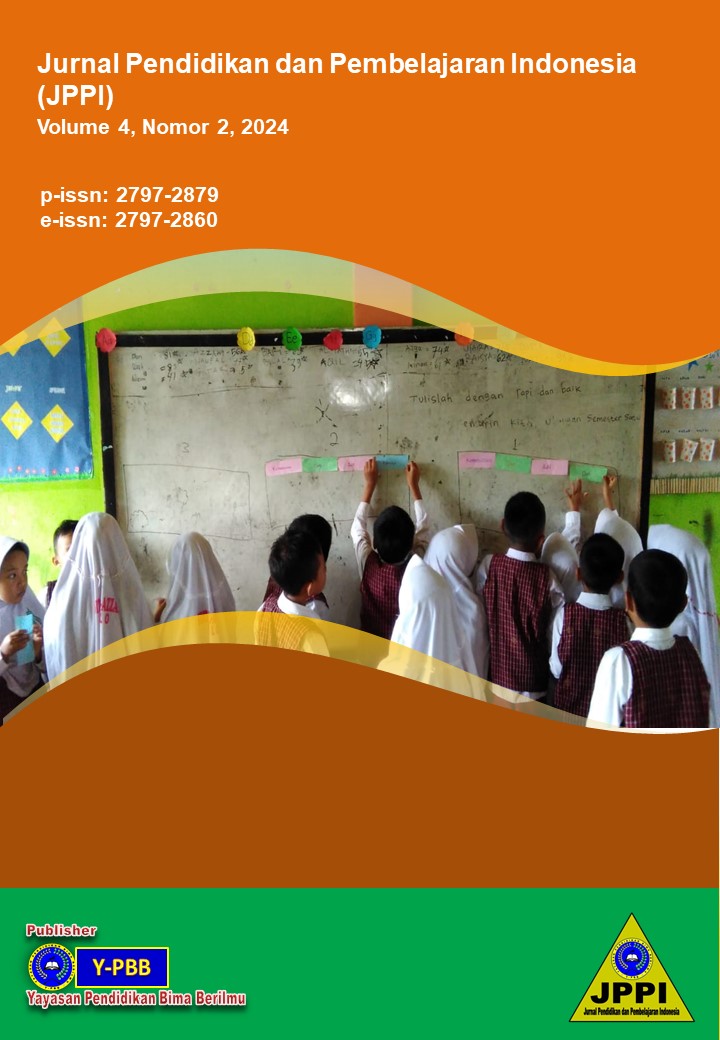Implementation of Flipped Classroom in Increasing Students’ Grammar Ability of Islamic Economic Department Student in UIN Datokarama Palu
DOI:
https://doi.org/10.53299/jppi.v4i2.529Keywords:
English, Flipped Classroom, GrammarAbstract
The aim of this research was to describe the effect of the flipped classroom on increasing students’ ability in grammar. This research belonged to quasi-experimental research with a group pre-post-test design involving 50 bachelor degree students from the Islamic Economic Department at UIN Datokarama Palu as the sample. The sampling technique was total sampling with the experimental group (25 students) and control group (25 students). To assess the students’ ability in grammar, four components were measured: accuracy in tense usage, consistency, understanding of tense form, and contextual appropriateness. The students’ scores were classified into five categories: very good, good, medium, low, and failed. After treatment, the grammar ability scores increased for the experimental group. The percentage increased in all aspects: accuracy in tense usage increased by 45%, consistency by 40.6%, understanding of tense form by 31%, and contextual appropriateness by 32.8% from the pre-test scores. The Flipped Classroom model revolutionized the teaching of English grammar, offering practical strategies for implementation, and emphasizing the need for collaborative and independent learning experiences to enhance students' language proficiency and overall learning outcomes.
References
Al-Harbi, S. S., & Alshumaimeri, Y. A. (2016). The Flipped Classroom Impact in Grammar Class on EFL Saudi Secondary School Students’ Performances and Attitudes. English Language Teaching, 9(10), 60–80.
Basal, A. (2015). The implementation of a flipped classroom in foreign language teaching. Turkish Online Journal of Distance Education, 16(4), 28–37.
Bergmann, J., & Sams, A. (2014). Flipped learning: Maximizing face time. Training & Development, 68(2), 28–31.
Bishop, J. L., & Verleger, M. A. (2013). The flipped classroom: A survey of the research. ASEE National Conference Proceedings.
Chen Hsieh, J. S., Wu, W. C. V, & Marek, M. W. (2017). Using the flipped classroom to enhance EFL learning. Computer Assisted Language Learning, 30(1), 1–21.
Fearon, C., Starr, S., & McLaughlin, H. (2011). Value of blended learning in university and the workplace: Some experiences of university students. Industrial and Commercial Training, 43(7), 446–450.
Han, Y. J. (2015). Successfully flipping the ESL classroom for learner autonomy. NYS Tesol Journal, 2(1), 98–109.
Hao, Y. (2016). Exploring Undergraduates’ Perspectives and Hipped Learning Readiness in Their Flipped Classroom. Computer in Human Behaviour, 59(1), 82–92.
Homma, J. E. B. (2015). Learner autonomy and practice in a flipped EFL classroom: Perception and perspectives in new digital environments. Computer Assisted Language Learning, 28(2), 208–216.
Kang, N. (2015). The comparison between regular and flipped classrooms for EFL Korean adult learners. Multimedia-Assisted Language Learning, 18(3), 41–72.
Mandasari, B. (2020). The Impact of Online Learning toward Students’ Academic Performance on Business Correspondence Course. EDUTEC: Journal of Education And Technology, 4(1), 98–110.
McDowell, E. A. (2010). Using Open Educational Resources to help students understand the sub-prime lending crisis. American Journal of Business Education, 11(3), 329–340.
O’Connor, C., Mortimer, D., & Bond, S. (2011). Blended learning: Issues, benefits and challenges. International Journal of Employment Studies, 19(2), 62–82.
Obari, H., & Lambacher, S. (2015). Successful EFL teaching using mobile technologies in a flipped classroom. Critical CALL–Proceedings of the 2015 EUROCALL Conference, 433–438.
Philip, C., Tino, S., & Mario, S. (2016). Experimental Design Research Approaches, Perspectives, Applications. Routledge.
Raths, D. (2014). Nine video tips for a better flipped classroom. The Education Digest, 79(6), 15–21.
Staker, H., & Horn, M. B. (2012). Classifying K-12 Blended Learning. Innosight Institute, Inc.
Suryani, A. D. (2022). The Use of “Flipping Classroom” for Teaching Story Telling to the Tenth Graders. Edukasia: Jurnal Pendidikan Dan Pembelajaran, 3(2), 142–151.
Tucker, B. (2012). The flipped classroom. Education Next, 12(1), 82–93.
Zappe, S., Leicht, R., Messner, J., Litzinger, T., & Lee, H. W. (2009). Flipping the classroom to explore active learning in a large undergraduate course. American Society for Engineering Education.
Downloads
Published
Issue
Section
License
Copyright (c) 2024 Jurnal Pendidikan dan Pembelajaran Indonesia (JPPI)

This work is licensed under a Creative Commons Attribution 4.0 International License.














